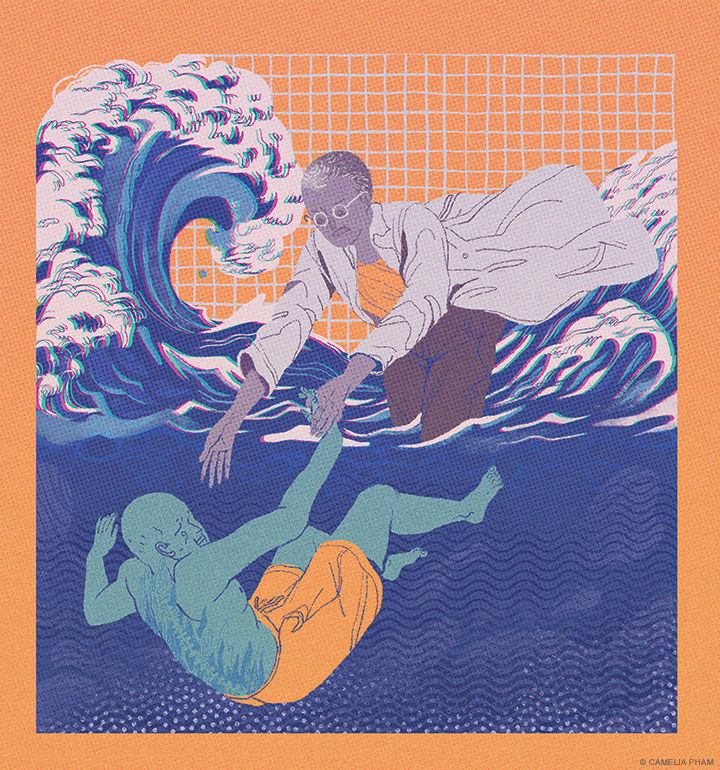
The uplifting story of the New York neurosurgeon who helped save a stranger’s life.
Phil Vehap diligently laid out his clothes on the bed. The 52-year-old creative director from New Jersey wanted to be ready to go out to celebrate his 15th anniversary with his wife as soon as he finished taking a pre-dinner dip with their 12-year-old son. Darting out of the Amagansett, New York, beach rental his family was sharing with another, he headed straight for the ocean.
Vehap had been trying to learn to body surf, and had recently become confident in his ability to ride waves. But on this early August afternoon, one of the first waves to hit him caused him to flail and tumble beneath the surface. When the next one crashed, he realized he was powerless to swim back to shore.
“It didn’t really feel like much when it hit me,” he recalls. “I could see that I was underwater because I could see the beams of light from the sun coming through the water. But when I went to swim, I couldn’t. Nothing happened. And within seconds I knew: Oh my god, I can’t believe I’m paralyzed.”
His next few thoughts were even more ominous. As the “relentless waves were just hitting me over and over again,” Vehap figured he’d drown because no one could see him. Even after washing up on shore, where he wiggled his eyes toward his wife “in a panic” to let her know he couldn’t move and heard his son yell out “Daddy”—“a loud screech” that continues to haunt him—he began to brace for the end. “I’m thinking I’m going to die,” he says. “I’m thinking these are my last moments.”
Nearby, David Langer C’85 M’90 GM’98, the chair of neurosurgery at New York’s Lenox Hill Hospital, was enjoying a relaxing afternoon on that private beach in Amagansett, where he and his wife have had a summer home since 2000. When he heard the cries for help—“Is anybody a doctor??”—he immediately thought back to a similar moment nine years before. “I was almost in exactly the same place, at exactly the same time of day,” says Langer, when his wife Nancy Lipsitz, an anesthesiologist, tried to resuscitate a woman who had been drowning, to no avail. “It was horrible,” he says.
Now, Langer rushed over to help the man lying chest down near the shoreline, again bracing for the worst while fully aware that, in many situations, there’s “not much a neurosurgeon can do.” This time, there was. Vehap’s behavior suggested a spinal cord injury, and Langer instructed other beachgoers to stabilize his neck before putting boogie boards under him to carefully move him out of the shallows so the waves would stop rolling over his back. All the while, Langer calmly talked to Vehap, explaining that he was a neurosurgeon and encouraging him to try to wiggle his toes and fingers.
“Just keep working at it.”
Those words pierced through the rest of the noise, motivating Vehap. After about 20 minutes, he could move his toes. Then, his feet and legs. “My whole body felt like lead,” Vehap recalls. “And so, once I could get my legs moving up and down a little bit, then I could start to feel my thighs, then my stomach. My chest a little bit started to come back. It was very tingly but I could feel it.”
By the time the paramedics arrived, Langer was confident Vehap would be able to recover and that he was possibly suffering from central cord syndrome—a cervical spinal cord injury characterized by the loss of motion and sensation in arms and hands. So when the EMS technician told Vehap, “I’m 90 percent sure you’ve severed your spinal cord,” Langer remembers responding: “Dude, I’m 100 percent sure you haven’t severed your spinal cord.” Massively relieved, Vehap mustered a laugh as he was transported to an ambulance, and then to a MedEvac helicopter to be airlifted to Stony Brook University Hospital.
Before the two parted ways, Vehap begged Langer to tell his wife who he was, so that he could properly thank him. The doctor didn’t have anything to write it down, so he told her his last name, unsure if she’d remember amidst all the chaos. When the ambulance whizzed away, Langer “felt a little emptiness.” He thought of how traumatic it had been for him, between college and medical school, when his father, the late Penn cardiologist Terry Langer, suffered a stroke—and how traumatic the last 30 minutes must have been for Vehap’s son. “Just as a human being, you feel compassion for the guy and for his family,” Langer says. “And it was hard to sort of let him go—especially because I knew I could help him.”
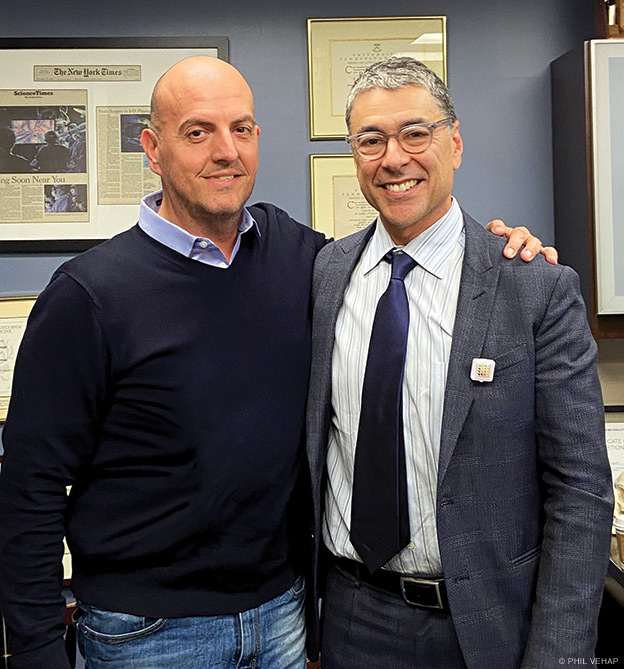
Not long after, Langer received the call he had been hoping for. Vehap had learned Langer was a prominent neurosurgeon at Lenox Hill, had gotten his cell phone number, and was soon texting him screenshots of his MRI from the Stony Brook ICU. Even though he wasn’t paralyzed, Vehap was a long way from being out of the woods. Langer informed him that it looked like he had a “pretty bad” preexisting condition called spinal stenosis—an abnormal narrowing of the spinal canal that exerts pressure on the spinal cord. The surgeon at Stony Brook wanted to operate right away, but feeling a strong bond to the man he credits with saving his life, Vehap decided that he wanted Langer to be the one to do it. Shortly after being discharged, Vehap went into Manhattan for an appointment with Langer, who immediately gave him a hug and a kiss—“as if I had known him for 30 years,” says Vehap, calling it a “very tender moment.”
Emotional bond aside, Vehap quickly learned he was in good hands. An internationally recognized expert trained at Penn (where he went to medical school and did his neurosurgical residency, after rowing for the Quakers as an undergraduate), Langer has made several innovations in healthcare, including the development of a video exoscope to project spinal surgeries in 3D onto a screen, and a mobile application called Playback Health, which uses social networking technology and video to give patients easier access to their medical records.
Langer used the latter to help Vehap absorb his diagnosis and the former to guide his team through a surgery to fuse the C3 to C5 vertebrae in the front and back. “We actually noticed something on the films … about some of the ligamentous injury he experienced,” Langer explains. “The spine is basically all bone, but there’s a fair amount of soft tissue that sort of keeps the spine aligned—ligaments and discs. And when those get disrupted, even though there might not be a fracture, the spine can be somewhat unstable. … So it required a little bit more of an aggressive procedure. But I think this is much better for him and for his long-term outcome.”
After a seven-hour surgery on September 4—almost exactly one month after his near drowning—Vehap awoke with his spinal deformity corrected and no pain. “I’ve not experienced any pain ever, which was shocking to me,” he adds, though he still has some residual tingling in his left hand and has been rehabbing in the gym to get back to full strength. But Langer recently cleared Vehap to drive and then to go back to work at Think Brands, his boutique branding agency in New York’s Hudson Yards. “All in all, I’ve been comfortable,” Vehap says. “I just feel confident that I’m safe—and I don’t have to worry about the future.”
Who knows how differently it might have turned out had Langer not been on the beach that day? “I’m not a religious person,” Vehap says, “but I did have a feeling of some sort of divine intervention.”
The pair’s unlikely connection seems to be just as powerful for Langer, who calls Vehap “an amazing guy” and sent him a handwritten note about how the experience has been life-changing for him as well. “It was just an honor to take care of him,” Langer says. “I’m incredibly lucky to do what I do and to have the opportunity to take care of people like that. That’s why I went into medicine.” —DZ


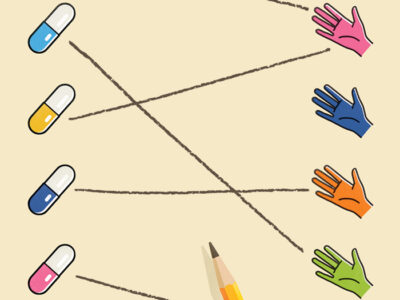
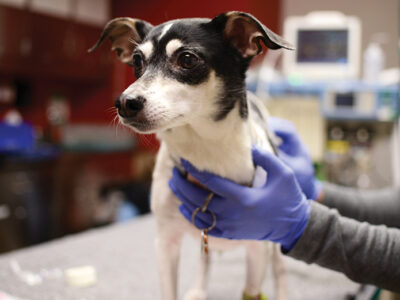
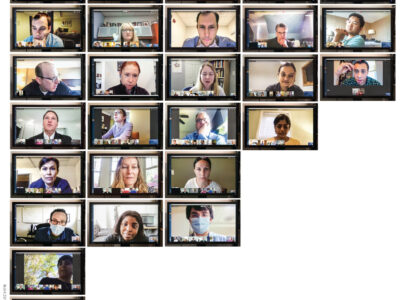
Beautifully written and what a great story! I found this after watching “Lenox Hill” – documentary series on Netflix. The series focuses on the work of Dr. Langer and this story is in episode 8.
I had the honor to work beside Dr. David Langer many years ago and yes, I agree he is a hero!! Is work, compassion and humanism is humbling!! I still hold him as number one on my list of favorites!!!